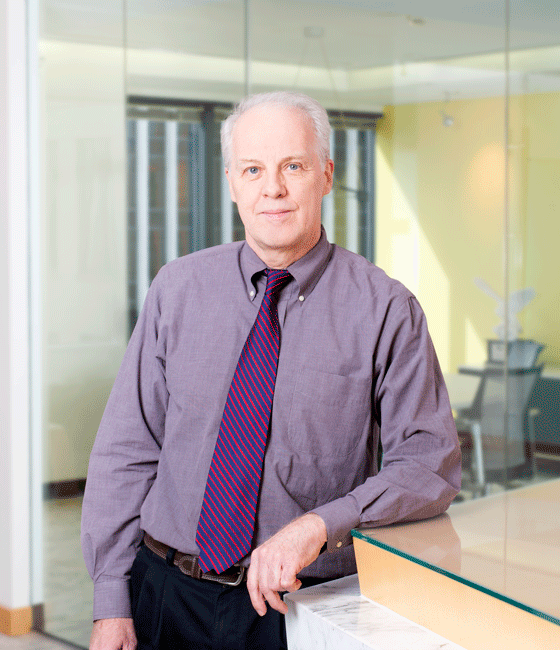The challenges faced by laboratory scientists are not always self-evident, but Chris Cowansage is dedicated to discovering them. As a lab planner and inveterate problem-solver, he values direct communication with lab users and likes to meet with them in their lab settings during the early stages of every project. He sees this as the most effective way to address relevant issues, taking technical complexities in stride and seeking simple and elegant solutions.
Chris first considered a career in architecture as a student working on the construction of a professor’s solar house. His interest in taking things apart and reassembling them broadened his understanding of materials and systems. He came to admire functional design that was evidence-based; at the same time he became impressed with several unforgettable works of art--notably the drawings of Giorgio de Chirico. Both function and aesthetics are still equally important to Chris; his view is that their seamless integration is the mark of a great lab.
In 1994, Chris and two other principals started Strategic Science and Technology Planners (SST), a consultancy for laboratory programming and planning. Over the next twenty years, Chris applied his problem-solving skills on increasingly complex projects.
In 2012, Chris began collaborating with the International Facilities Program of the CDC and the US Department of State. He was fortunate enough to be able to travel under the auspices of PEPFAR (the President’s Emergency Plan for AIDS Relief), with a group of equally motivated colleagues, to ten countries throughout Africa, the Arabian Peninsula, Eastern Europe, Southeast Asia, Latin America, and the Caribbean.
Today, he continues to serve enthusiastically as an instructor of lab planning for biomedical facilities as part of this effort to promote safe and sustainable design in emerging nations. The most recent project he has worked on for PEPFAR is the planning of the new public health labs for the Barbados Ministry of Health.
Chris’s longstanding commitment to the architecture of science is in evidence even during his off-hours. Wherever he travels, he makes sure to visit historic laboratories - or the plaques that mark them. One of these is the Edwardian-era Bacteriological Institute of Hong Kong. Others that he has visited include the home and collections of Nikola Tesla in Belgrade and the labs of Alexander Fleming and Rosie Franklin in London, as well as the labs of Marie Curie and Louis Pasteur in Paris. For Chris, these monuments to science reflect Pasteur’s view that laboratories are “the temples of the future.”

